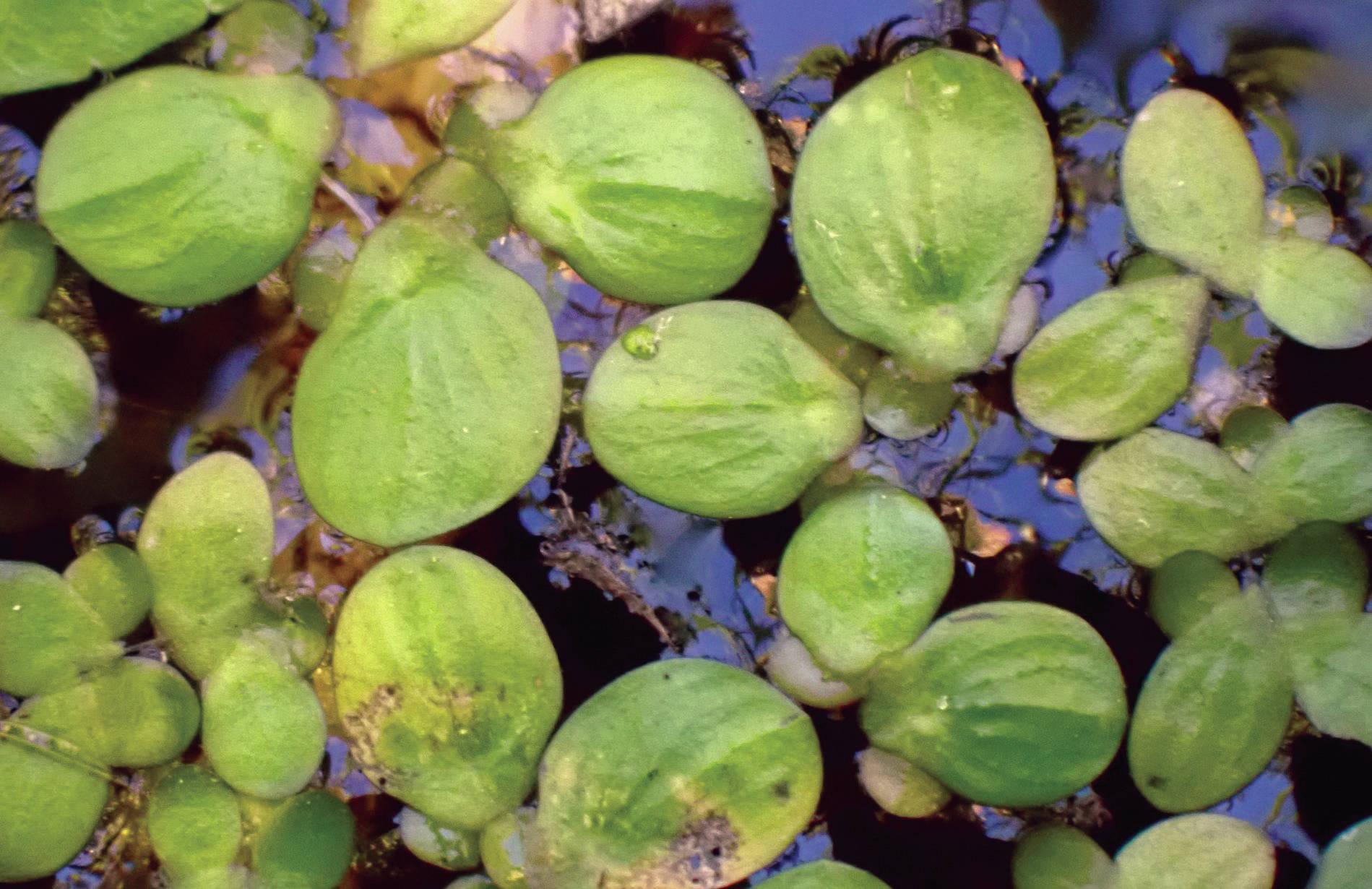My family can tell you that I stop and look at things: plants, mushrooms, worms, insects or any other part of the natural world. I also like to take pictures of what I find and post them on iNaturalist, an app for identifying living things.
Several times I have shared photos of duckweeds, but I never paid much attention to them because I thought that there was only one kind of duckweed in our area, the common duckweed.
Another member of the iNaturalist community pointed out to me that some of my duckweed pictures did not look like common duckweed. They were greater duckweed, a larger species that was not known to be present in Alaska.
I did some investigating. The nearest record of greater duckweed that I could find was over 900 miles away in British Columbia.
Even though this species is widespread around the world and is considered to be native to all continents except Antarctica, it is less common at high latitudes. Our new records from Suvena Lake and Timberlost Lake in Nikiski and Sucker Creek off of Swan Lake Road appeared to be the farthest north records of greater duckweed in North America.
The discovery of greater duckweed on the Kenai Peninsula brings the total number of duckweed species in our area to three. A smaller species is the more common floating duckweed here.
At this point, I am not sure whether this smaller duckweed is common duckweed or turion duckweed. Star duckweed, our third species, is an unusual, shade-tolerant duckweed that spends most of its time on the bottom of lakes and ponds, growing most in the spring and fall when other duckweeds are less dominant.
We do not know whether greater duckweed is native to our area, whether it was moved around by people, or whether it was transported by wildlife. In the two areas where we have found greater duckweed, non-native aquatic plants like elodea, cattails and reed canary grass have already been introduced by people, so greater duckweed might have gotten here the same way.
Waterfowl can disperse duckweeds that stick to their feathers, but if this is how greater duckweed arrived on the Kenai Peninsula, then we would expect to be finding greater duckweeds in other wetlands between here and British Columbia.
Locally, muskrats and probably beavers are good at spreading duckweeds shorter distances. The sticky roots of these small plants adhere quite well to mammal fur. Duckweeds are also spread naturally by flooding events that temporarily connect bodies of water.
The more I have looked at these tiny plants, the more intriguing they have become to me. Other people are interested, too. I had no idea that there was an International Steering Committee on Duckweed Research and Applications or an International Lemna (a kind of duckweed) Association.
People use duckweeds for removing toxins from wastewater, for fertilizer, for animal feed and even for human consumption. From an agricultural perspective, a unique advantage of growing duckweeds is that they have the fastest growth rates of any flowering plant.
The most productive duckweeds can double their weight every 24 hours so that 1 pound of duckweeds becomes 2 pounds the next day and about 130 pounds in one week! In the real world, farms have been able to produce 1 to 35 tons of duckweed per acre per year.
Duckweeds are high in protein, up to 40% dry weight, with nutritional value similar to soy beans. Agricultural researchers have determined that duckweeds can be a good source of protein for chickens, ducks, pigs, sheep, goats, fish and shrimp.
So far the aquaculture industry has been the biggest consumer of duckweeds, growing carp and other fish on duckweed-enriched diets.
Known as khai-nam (translation: water eggs) in Thailand, water meal or water lentils, certain duckweeds are regularly harvested and sold in vegetable markets in several Asian countries. There they are served in red curries, stir-fry dishes, salads and omelets, and are reported to be mildly flavored.
Commercial ventures have been developing ways to produce, process and market duckweeds to make them more popular as human food. Several duckweed-based foods and nutritional products are now available.
In nature, many species of wildlife eat duckweeds including muskrats, beavers, mallards, blue-winged teal, Canada geese, trumpeter swans, snails and insects. Fish, frogs and other aquatic animals hide under duckweed for cover.
In protected ponds, thick mats of duckweeds can block sunlight and reduce the amount of oxygen absorbed by the water. The dark, oxygen-poor environment under duckweeds suppresses the growth of many submerged plants. In more open water, where duckweeds are easily swept away, water lilies and other rooted plants tend to outcompete duckweeds.
Almost all reproduction in duckweeds is through cloning, where new plants are produced by budding. Rarely, the plants will grow tiny flowers, some of which are the smallest flowers in the world, measuring less than one-sixty-fourth of an inch long. The flowers yield minuscule fruits that are little more than floating seeds.
Some species of duckweeds are well adapted to dealing with harsh winters. As the growing season draws to a close, the plants grow dark green, disk-shaped structures called turions that break off and sink to the lake bottom.
In the spring after ice-out, when light reaches the waiting turions, they produce gas bubbles that float them to the surface, where they soon resume growing in their typical summer form.
When duckweeds start proliferating again next spring, I will be pay more attention to them than I have in the past. I am sure that there is much more to learn about them. I may even try growing some duckweeds at home and try feeding them to my chickens.
Matt Bowser serves as Fish and Wildlife Biologist at Kenai National Wildlife Refuge. Find more Refuge Notebook articles (1999–present) at https://www.fws.gov/refuge/Kenai/community/refuge_notebook.html.
By MATT BOWSER
Kenai National Wildlife Refuge

